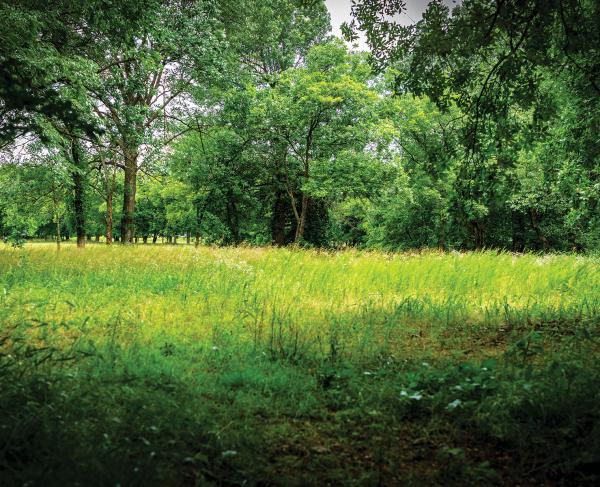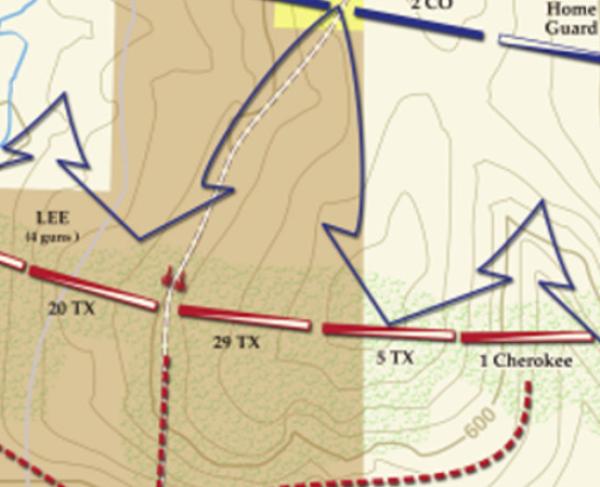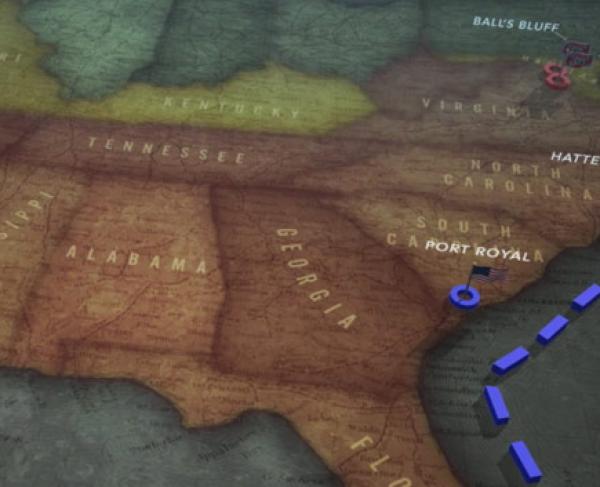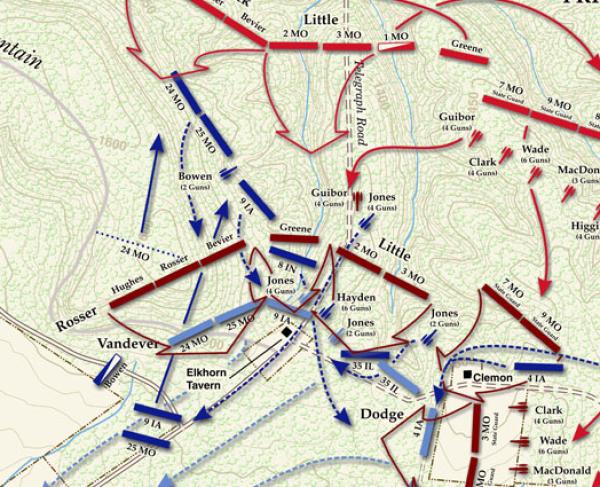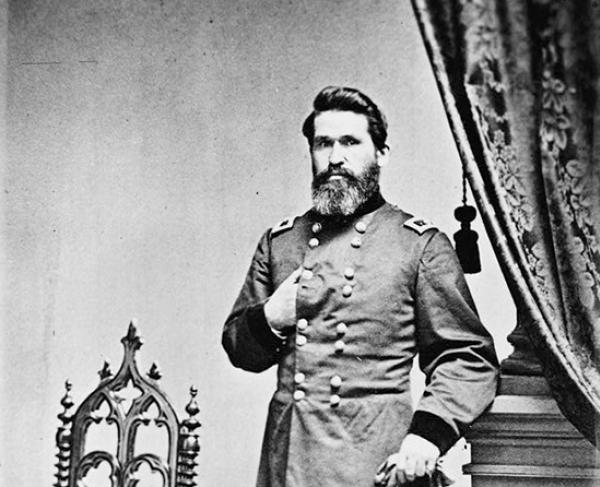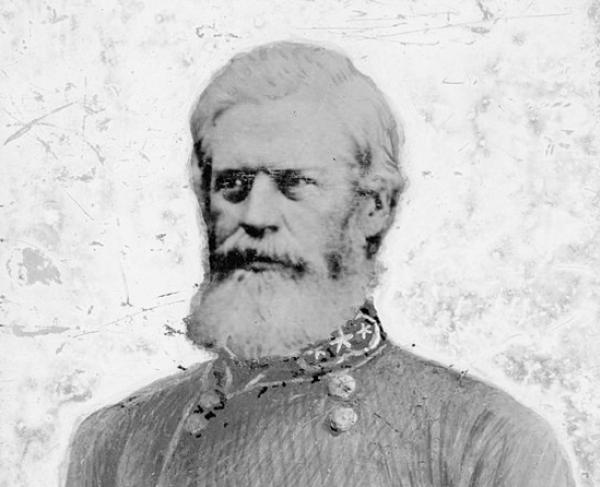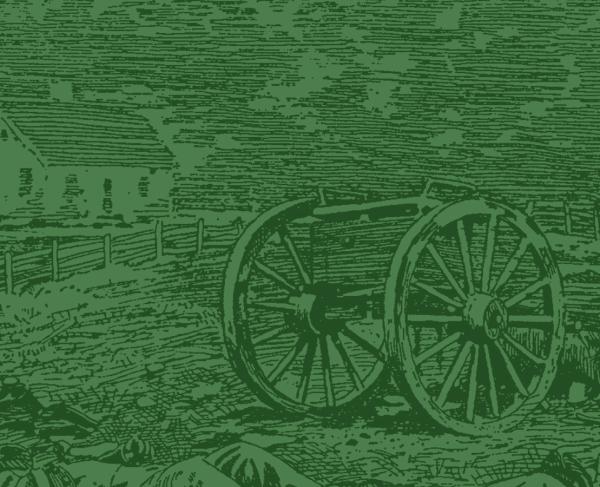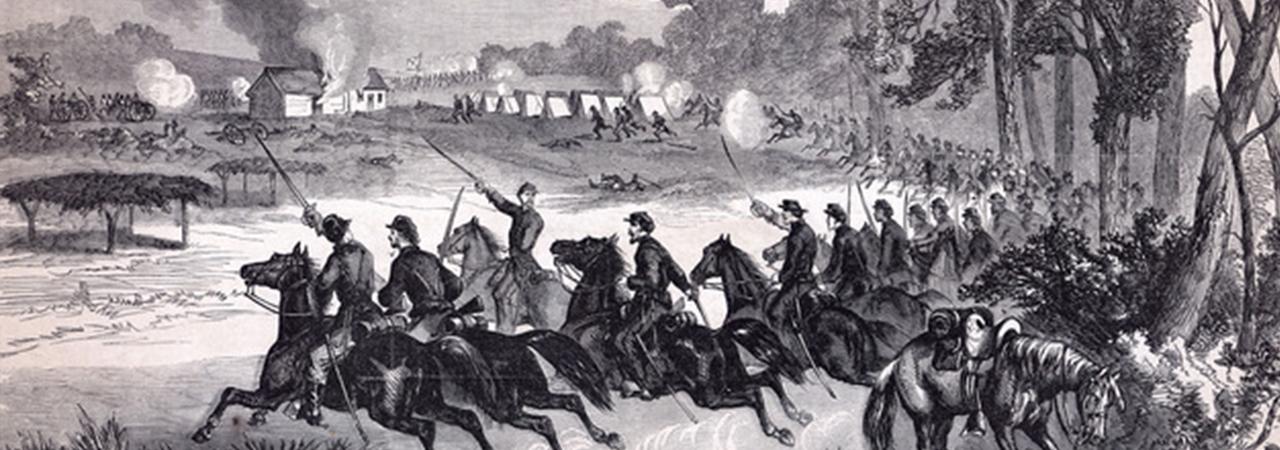
Honey Springs
The Affair at Elk Creek
Muskogee County and McIntosh County, OK | Jul 17, 1863
Honey Springs was a small farming community with a stone “depot” used as a common resting stop along the Texas road, around 20 miles south of Fort Gibson. The Confederates led by Gen. Douglas H Cooper used this depot and the surrounding area as a sort of base from this location, Confederate cavalry detachments harassed the Federals at Fort Gibson and attacked supply trains in route from Fort Scott. Cooper’s plan was to march his men to Fort Gibson to take it from the federal forces, however, to do this he needed reinforcements which were to come from Fort Smith, Arkansas in the form of approximately 3,000 men and additional artillery under the command of Brigadier General William L. Cabell.
Hearing of this planned attack, Blunt rallied his men into action. Between July 14-16, 1863 Blunt’s men constructed flatboats to get his supplies and troops across a swollen Arkansas River and begin marching towards Honey Springs. Blunt's command consisted of the 2nd Colorado Infantry, 1st Kansas (Colored) Infantry, 6th Kansas Cavalry, 3rd Wisconsin Cavalry along with the 1st, 2nd and 3rd Regiments of Indian Home Guard.
On the morning of July 17, Blunt cautiously approached Cooper's line located beyond Elk Creek. Cooper had at his disposal the 1st and 2nd Creek Mounted Rifles, 1st and 2nd Cherokee Mounted Rifles, 1st Chickasaw Regiment of Mounted Rifles, 1st Choctaw Regiment of Mounted Rifles as well as three Texas cavalry regiments.
After an artillery bombardment and despite the extremely hot weather, Blunt ordered his line forward. Both sides exchanged volleys as the fighting ebbed and flowed. Due to the confusing nature of the action, the 2nd Indian Home Guards mistakenly maneuvered across the front of the 1st Kansas (Colored). Union officers quickly recognized the mistake and ordered the Guards to reform. Believing the Federals were in retreat, the Confederates surged forward. The 1st Kansas, however, stood firm and delivered a devastating fire into the gray ranks, causing the Confederates to collapse.
Realizing he could no longer hold his position north of Elk Creek, Cooper ordered his Confederate forces to remove the artillery, vigorously defend the bridge across the creek, and stand firm on the south bank of the stream. They made several determined efforts to hold the bridge, but finally superior Federal firepower prevailed. The Confederates were in orderly retreat for about a mile and a half down the Texas Road to Honey Springs Depot. Here a final but effective stand was made, mainly by the reserve Choctaw and Chickasaw Regiment and the two squadrons of Texas cavalry, giving the Confederates time to evacuate virtually all of their forces, artillery, and baggage train. All buildings and supplies at Honey Springs were set fire by the retreating Confederates; the Federals arrived soon enough to extinguish some of the flames and save quantities of bacon, dried beef, flour, sorghum and salt.
By 2 p.m., the battle was over—four hours after it began. The Confederates moved east from the battlefield and at about 4 p.m. joined Brigadier General Cabell’s 3,000-man force in route with four mountain howitzers from Fort Smith. Blunt ordered his forces to bivouac for the night on the battlefield, treat the wounded, and bury the dead, including the Confederates. Late on the day following the battle, Blunt directed his forces to return to Fort Gibson. His victory solidified Union control of the Indian Territory.
Honey Springs: Featured Resources
All battles of the Operations to Control Indian Territory Campaign
Related Battles
3,000
6,000
77
181


